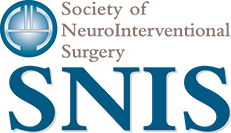By Dr. Sandra Narayanan
Taking care of your health can seem like an overwhelming task. The sheer amount of information available online, in commercials, and in books and magazines is enough to intimidate even savvy health consumers. Add to that the personal experiences of your friends, co-workers or family members who’ve “had that before” and it can be difficult to separate myths from facts.
This is especially true when it comes to stroke.
As an interventional neurologist, I see and treat a variety of stroke cases — from mild to severe, from 2 hours after symptoms to 2 days. While none are exactly alike, this is what I make sure everyone I care about knows about stroke:
- Stroke can happen at any age, including to children and young adults. The past decade has seen a 44% increase in the number of young Americans hospitalized due to stroke.
- Just like trauma, stroke is time-sensitive and requires first responders to determine severity. While there are certain tell-tale signs of stroke, it can sometimes mask itself as other things, such as a migraine or even being intoxicated. Always dial 911 if you suspect someone you know is having a stroke. First responders are in the best position to get people to the right care right away.
- Not all strokes are equal. The deadliest ones are known as emergent large vessel occlusions (ELVOs). These strokes require immediate care by a trained team to best prevent disability or death. Thrombectomy, a procedure that uses catheters to quickly reopen blocked arteries in the brain, can help severe stroke patients survive and thrive if they receive the treatment as soon as possible. Only 15% of eligible stroke patients receive thrombectomy. This is in part because the default in many areas is to take patients to the nearest hospital instead of a specialized emergency facility.
- All severe stroke patients should be treated at a Level 1 stroke center, which offers thrombectomy 24/7/365. Think of these centers like Level 1 trauma centers: They have dedicated care teams who are ready to jump into action as soon as a patient arrives — in some cases literally meeting them at the door.
- Every state has the power to ensure stroke patients arrive, survive and thrive. Tennessee has updated its stroke protocols so more patients have access to Level 1 stroke centers. Arizona, Colorado, Ohio, Florida and Virginia also have improved their stroke systems of care. As a physician, I have seen what happens when a stroke patient arrives at my hospital too late for me to help. We can and should improve stroke systems of care nationwide.
It’s impossible to be prepared for every eventuality when it comes to our health but keeping these stroke facts top of mind can make a big difference if you find yourself or someone you love in a stroke emergency.

